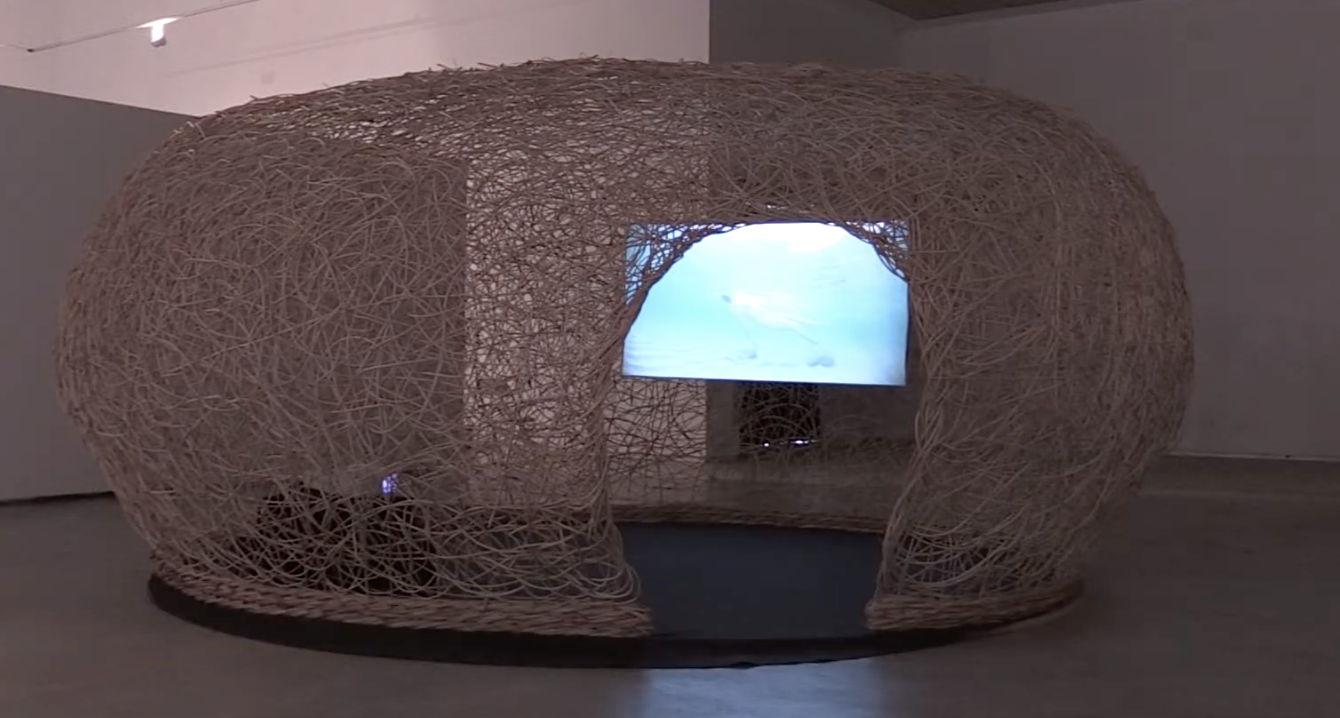Visualizing birth through Mari Chordà’s “Great Wicker Uterus”

Gran Úter de Vímet
Multimedia installation, Lo Pati Center of the Arts, Amposta, Catalonia
Copyright 2017. Mari Chordà, All Rights reserved.
In 2017, Catalan artist Mari Chordà held an exhibit at Lo Pati Center of the Arts in her hometown of Amposta, a village near to Tarragona in the southeast corner of Catalonia. The exhibit, which was titled “Llots i Torbes” (“Mud and Peat”) centered on themes of fertility and the origin of life. Gran úter de vímet (Great Wicker Uterus), an installation and the central piece of the exhibit, depicted a giant uterus made of basketry and containing an opening large enough to walk through.
This video of Chordà’s unique art shows both the installation and the artist at work.
Mònica Guilera and Tim Johnson, a team of basket makers, wove the uterus. Inside the structure, Chordà included a video projection of a nude woman swimming in the clear waters of the sea and emitting the sounds of water, which are reminiscent of the neonatal sounds experienced by the fetus when immersed in amniotic fluid and the mother’s womb.
Chordà’s Great Wicker Uterus provides an actual physical experience through which to visualize birth. Viewers/participants enter the space of the installation, which is calming in both its shapes, colors, and sounds, and are given the opportunity to experience the womb, as well as to exit the womb, symbolic of a child emerging during the birthing process.
Visualizing Birth has previously explored Chordà’s birth art, though in the context of the artist’s self-portraits of the pregnant body (See Visualizing Pregnancy in Mari Chordà’s Pregnant Self Portraits)
To learn more about the work of Mari Chordà, read her 2015 interview with the Tate Museum.